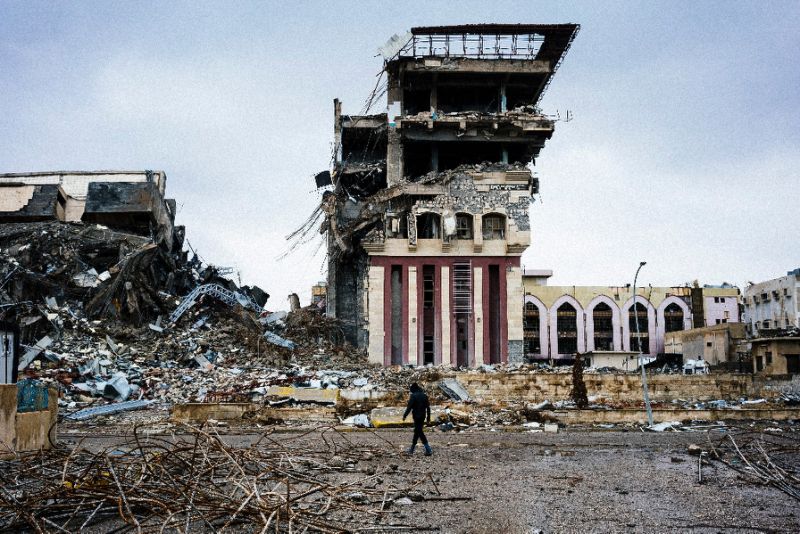Mosul – Nizar leans on his clutch as he walks among the rubble of what is left of the main building of Mosul University that lies in the eastern part of the embattled Iraqi city.
He is part of a unit of four volunteers working relentlessly to bring the university back to life three months after the damage it suffered during an Iraqi offensive against the ISIS terror group.
The sprawling campus on the now retaken eastern side of Mosul was extensively destroyed because it had been used as a major headquarters by the extremists who took over the city in June 2014.
“This is all that’s left here,” said Nizar, a young man in his twenties, after clambering through a hole into a gutted room that used to be the office where student cards were printed.
Iraqi forces launched a massive offensive in October last year to retake the country’s second city from ISIS and in January fully secured the eastern side, where the university is located.
Nizar and his three friends are going room-to-room, one floor after another, turning every piece of debris to find records and permits that could make resuming a university year easier.
“After the liberation, we came here and assessed the damage,” said Hamdoon, another young volunteer.
“Twelve buildings were completely levelled, the other buildings had damage ranging between five and 20 percent, most of it caused by arson,” he said. “Also, some were booby-trapped and have now been cleared.”
Broken classroom chairs were piled up outside some of the buildings that are still standing and whose walls have been marked “safe” or “unsafe” with red spray paint.
“These buildings have a history and we too have stories in each one. Discovering the destruction was a heartbreak but I think it will return to be a leading Iraqi university,” Hamdoon said.
The University of Mosul, which was established in the sixties, was considered one of the best universities in the region and the country’s second learning center behind Baghdad University.
“The university is the life blood of Mosul… today it needs support,” said Hamdoon.
The youngsters’ task is huge and they are getting limited help because the campus, which spreads along the Tigris, is still dangerously close to the areas where fighting is ongoing.
The extremists who control positions on the other side of the river that divides the city have regularly fired mortar rounds on the liberated east or launched attacks with weaponized drones.
But Nizar and his friends, all of them former university employees, are dedicated to their task.
“This is our city and our university, this university was good to us,” said Nizar, who was wounded by shrapnel from an explosion during fighting for the city.
“We are university employees so we answered the call by campus management to form a team of volunteers, with the hope of achieving something useful,” Nizar said.
He admitted the task ahead was daunting however and said results would be limited without support from the central government and from the international community, especially to start paying salaries again.
Hundreds of thousands of people have fled Mosul since the start of the offensive six months ago, in addition to the many who had already left the city during extremist rule.
Tens of thousands have since returned but the lack of services and the extent of the destruction have meant that life is only slowly returning to normal.
Foreign organizations are reluctant to start fully implementing reconstruction projects while fighting rages just across the river. Who will govern the city once it is fully retaken also remains unclear.
In the meantime, Nizar, his friends and other similar teams diligently sift through the wreckage of the institution they see as Mosul’s best chance of resurging.
They dust every document they can retrieve, examine it and file it in cardboard boxes to be stored in a guarded room.
“Their work is very useful, they have found documents that are like treasures to us but unfortunately (ISIS) has burnt many of our archives,” a university official who would not give his name said.
